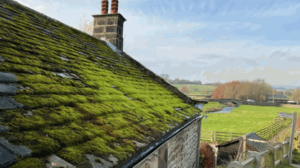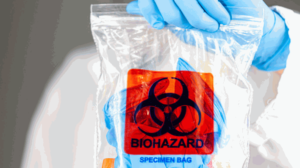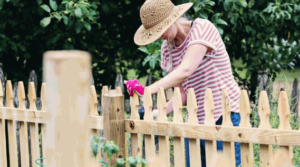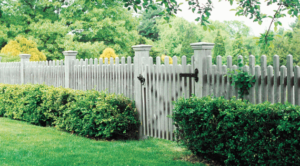Are you looking to give your driveway a fresh new look? Pressure washing could be the solution you’re looking for. In this article, we’ll explore the benefits of pressure washing your driveway, the equipment you’ll need, and a step-by-step guide on how to do it yourself. We’ll also share some helpful tips and advice on how often you should be pressure washing your driveway to keep it looking its best. Let’s get started!
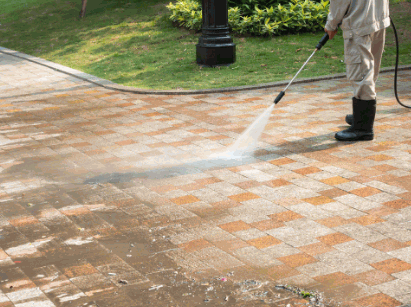
What Is Pressure Washing?
Pressure washing is a highly effective method of cleaning various surfaces using high-pressure water spray to remove dirt, grime, stains, and mold.
This powerful cleaning method is commonly used in residential, commercial, and industrial settings due to its ability to quickly and efficiently eliminate tough build-up. The high water pressure generated during pressure washing not only helps in removing stubborn dirt but also prevents the need for harsh chemicals, making it an eco-friendly cleaning option. From concrete driveways and pavements to wooden decks and cladding, pressure washing can revitalize a wide range of surfaces, enhancing their appearance and increasing their longevity.
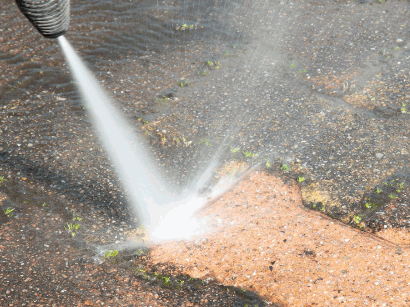
Why Pressure Wash Your Driveway?
Pressure washing your driveway is essential to enhance its appearance, increase curb appeal, and maintain it as a DIY home improvement project.
By regular pressure washing your driveway, you can remove built-up dirt, grime, mold, and other unsightly stains that can accumulate over time. This not only improves the overall aesthetics of your property but also helps in preventing potential slips and falls caused by slippery surfaces.
Conducting a DIY pressure washing project on your driveway allows you to save money on professional cleaning services while giving you the satisfaction of completing a task that directly impacts the visual appeal of your home.
Increases Curb Appeal
Pressure washing your driveway significantly enhances its curb appeal by rejuvenating the surface, removing weathered residue, and restoring its original look.
The powerful jets of water used in pressure washing can effectively strip away years of dirt, grime, and stains that have accumulated on the driveway surface. This process not only brightens the appearance of the driveway but also helps in restoring its original color and texture. Pressure washing can also tackle tough oil stains, mold, mildew, and other unsightly marks that can make the driveway look worn out. By investing in pressure washing, you can bring new life to your driveway and make a lasting impression on visitors and passersby.
Removes Stains And Dirt
Pressure washing effectively removes stubborn stains, dirt, mold, mildew, and grime from driveways, leaving them clean and revitalized.
Using high-pressure water streams, pressure washing can work wonders in rejuvenating the appearance of driveways by targeting tough stains and accumulated dirt. The cleaning methods involved in pressure washing can penetrate deep into the surface, ensuring a thorough cleanse. Whether it’s oil stains, algae growth, or just general dirt build-up, pressure washing provides a powerful solution for restoring cleanliness and enhancing the overall curb appeal of driveways. The process not only saves time and effort but also guarantees a more sustainable and long-lasting surface cleanliness.
Explore in-depth: How To Clean Window Glass
Prevents Damage To Your Driveway
Regular pressure washing prevents damage to your driveway by maintaining its surface, applying necessary maintenance, sealing cracks, and waterproofing the area.
By regular pressure washing your driveway, you not only remove dirt and grime but also prevent the buildup of mold and mildew, which can lead to surface deterioration over time. Sealing cracks in the driveway helps to avoid water seepage, preventing potential structural damage. Applying waterproofing solutions adds an extra layer of protection against harsh weather conditions and prolongs the life of your driveway. These vital maintenance techniques are essential for preserving the integrity and aesthetics of your driveway in the long run.
What Equipment Do You Need For Pressure Washing Your Driveway?
To pressure wash your drive effectively, you need essential equipment such as a pressure washer, safety gear, and the necessary cleaning solutions.
- Pressure washer types to consider for drive cleaning include gas-powered or electric models, each with its unique features and benefits.
- Safety precautions are crucial when operating a pressure washer, so protective gear like goggles, gloves, and sturdy footwear should be worn.
Using appropriate cleaning solutions designed for pressure washing drives helps to achieve optimal results while preventing damage to the surface.
Regular equipment maintenance, such as checking for leaks and cleaning filters, ensures the longevity and efficiency of your cleaning equipment.
Pressure Washer
The pressure washer is the primary tool for driveway cleaning, featuring components like the nozzle, wand, pump, attachment, and hose for effective water pressure.
The nozzle is a crucial part of the pressure washer, responsible for controlling the spray pattern that determines the cleaning power. It directs the water stream at different angles, allowing for versatility in cleaning various surfaces.
The wand, also known as the lance, serves as the extension that helps reach high or hard-to-access areas with ease.
The pump is the heart of the pressure washer, which pressurizes the water flow for optimal cleaning performance.
Attachments such as surface cleaners or foam cannons enhance the functionality of the pressure washer, catering to specific cleaning needs.
The hose connects all these components, enabling a continuous flow of pressurized water throughout the cleaning process.
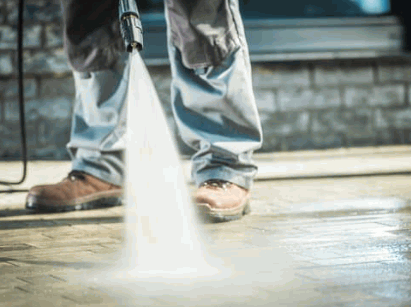
Cleaning Solution
Using the right cleaning solution is crucial for effective pressure washing, with options like soap, chemicals, detergent, rinse, and coating for optimal cleaning results.
Soap is a mild cleaning solution that is gentle yet effective in removing dirt and grime from driveways without causing damage. Chemicals are powerful agents that can tackle tough stains, oil spills, and grease buildup. Detergents are specifically formulated for pressure washing to break down stubborn residues. Rinses help to remove any remaining cleaning solution and residue, leaving a clean surface. Coatings offer an extra layer of protection, preventing future staining and adding longevity to the driveway’s cleanliness.
Safety Gear
Ensuring proper safety gear such as eye protection, gloves, and footwear is essential when pressure washing your driveway to prevent injuries and maintain a safe working environment.
Eye protection, like safety goggles or glasses, shields your eyes from potential debris or chemicals that may splash back during the pressure washing process.
Gloves provide a protective barrier against harsh chemicals and hot water, reducing the risk of skin irritation or burns.
Wearing suitable footwear, such as closed-toe shoes with good grip, helps prevent slips and falls on wet surfaces.
These safety precautions are crucial for anyone undertaking driveway pressure washing to ensure personal safety and minimize accidents.
How To Pressure Wash Your Driveway?
Pressure washing your drive involves following a specific technique, selecting appropriate nozzle tips, managing water flow, and using the right cleaning solution for optimal results.
- Start by sweeping your driveway to remove loose debris and dirt, ensuring a cleaner surface for the pressure washing process.
- Next, choose the correct nozzle tip for the job – a 25-degree tip is generally suitable for drives.
- Adjust the water pressure according to the surface material; for concrete, higher pressure is recommended, while for delicate surfaces like brick, lower pressure is a safer option.
- When applying the cleaning solution, start from the top and work your way down, allowing the solution to sit for a few minutes before rinsing off.

Prepare The Area
Before starting the pressure washing process, it is essential to prepare the area by sweeping the surface, rinsing off loose debris, and establishing a cleaning pattern for thorough coverage.
Sweeping the drive is crucial to remove any loose soil, leaves, or other debris that could disrupt the cleaning process. Use a robust brush to sweep in long, even strokes, working from one end of the drive to the other.
After sweeping, rinse the drive with a garden hose to dislodge any remaining soil and debris. This step will also help to wet the surface, making it easier for the pressure washer to remove stubborn marks.
When setting a cleaning pattern, begin from the far end of the drive and progress back toward the starting point in overlapping passes to ensure uniform cleaning.
Apply Cleaning Solution
Apply a concentrated stream of the cleaning solution on the driveway surface, use brushes to target stubborn residue, and ensure even coverage to maximize the cleaning effectiveness.
This method ensures that the cleaning solution penetrates deep into the surface, breaking down dirt and grime effectively. By using brushes, you can agitate tougher stains and residue, allowing the solution to work more efficiently. Ensuring uniform application prevents streaking or missed spots, resulting in a thoroughly cleaned driveway. The combination of concentrated streams, brush usage, and meticulous coverage guarantees a professional-level cleaning outcome, leaving your driveway looking refreshed and renewed.
Set Up Pressure Washer
Set up your pressure washer by adjusting the nozzle settings, distinguishing between turbine, petrol-powered, and electric models for optimal performance based on your driveway’s cleaning requirements.
To ensure efficient operation, consider starting with a wide nozzle setting for general washing and gradually adjusting to a narrower spray for tougher stains. Understanding the turbine functionality is crucial as it determines the water pressure generated. Petrol-powered washers offer higher mobility and power, making them suitable for larger areas, while electric models are more eco-friendly and require less maintenance. Matching the power source to your specific cleaning needs will enhance the overall effectiveness of your pressure washer.
Start Pressure Washing
Begin pressure washing your driveway by testing both high and low-pressure settings, adjusting water pressure as needed, and considering the surface material like pavers for optimal cleaning results.
- This step is crucial as different surfaces require specific pressure levels to avoid damage while effectively removing grime and dirt.
- High-pressure settings are suitable for tough stains on concrete driveways, whereas low-pressure settings are ideal for delicate materials like pavers to prevent any potential harm.
- By testing different pressure levels on a small inconspicuous area, you can determine the most suitable setting for achieving a thorough clean without causing any damage to the surface material.
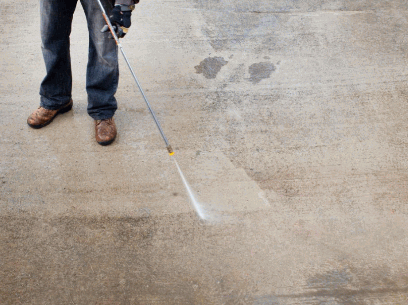
Rinse The Driveway
After pressure washing, rinse the driveway thoroughly, ensuring proper wastewater disposal, implementing suitable drainage solutions, and managing effluent to maintain environmental safety.
To effectively manage wastewater disposal, it is crucial to consider drainage considerations. Once the driveway is thoroughly rinsed, the next step involves directing the wastewater toward approved drainage systems. Avoid letting the wastewater flow into storm drains, as it may lead to environmental contamination. Utilizing methods like containment barriers or diverting the water towards permeable surfaces can help prevent runoff. Implementing best practices for effluent management, such as using biodegradable cleaning agents and filtering systems, can further reduce the environmental impact of driveway cleaning.
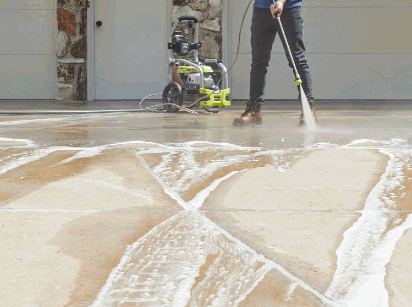
What Are Some Tips For Pressure Washing Your Driveway?
To enhance your pressure washing experience, consider regular maintenance, manage efflorescence, and ensure proper traction on the driveway surface for effective cleaning and safety.
Regular maintenance is crucial to keep your driveway in top condition. Make it a habit to sweep away debris and dirt on a regular basis to prevent build-up. Address any cracks or damage promptly to prevent them from worsening.
When dealing with efflorescence, a common issue caused by mineral deposits, use a mildly acidic solution or specialized cleaner recommended for concrete surfaces. Improving traction on your driveway can be achieved by applying a non-slip sealant or adding texturized coatings to enhance grip, especially during wet conditions. These practices not only optimize cleaning results but also ensure a safer environment for you and your family.
How Often Should You Pressure Wash Your Driveway?
The frequency of pressure washing your drive depends on factors like residue build-up, the presence of black spots, oil stains, and other surface contaminants that impact its appearance and longevity.
These elements not only affect the visual appeal of your outdoor space but also contribute to the safety and durability of your drive. Regular inspection of your drive can help you determine when it’s time for a thorough pressure wash.
For example, if you start noticing an accumulation of residue or stubborn oil stains, it’s a clear indication that a cleaning session is due. Setting up a cleaning schedule based on these indicators can ensure that your drive remains in top condition and free from unsightly blemishes.


